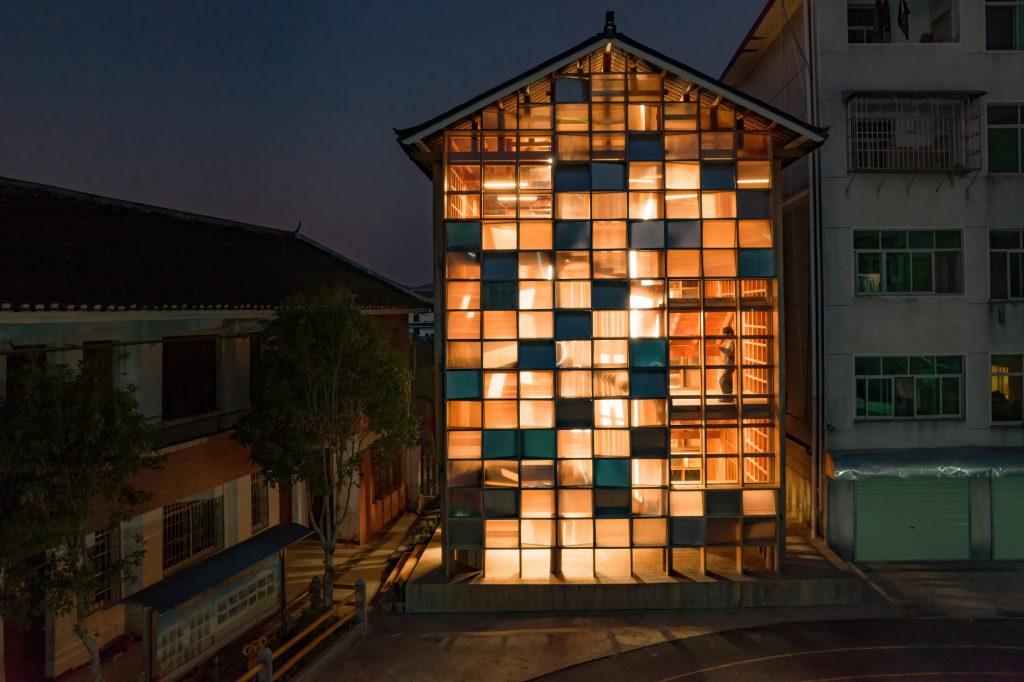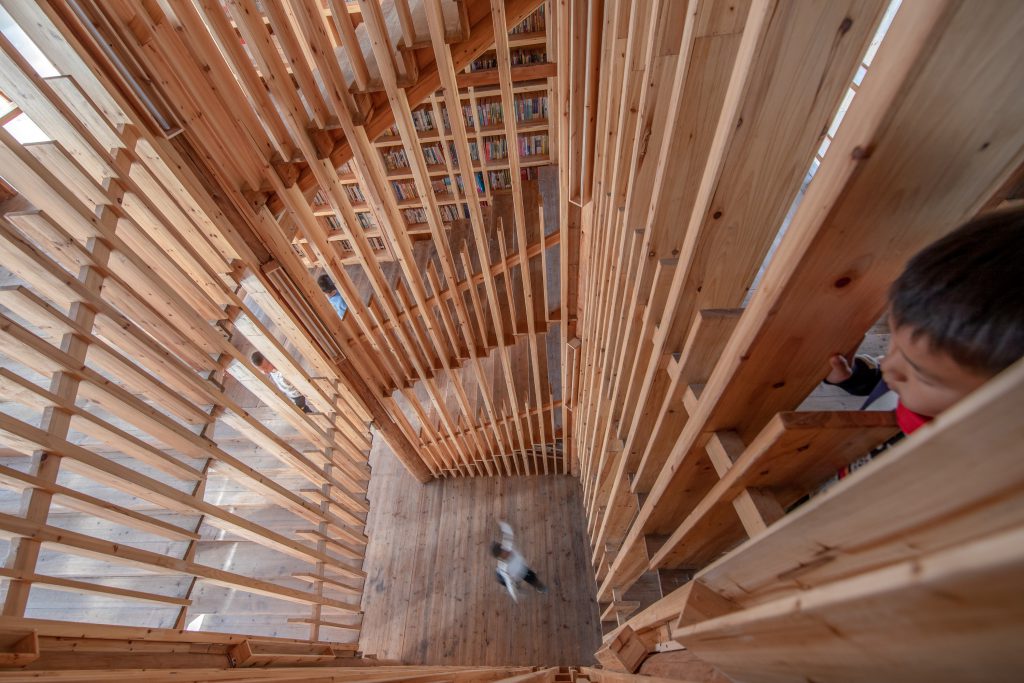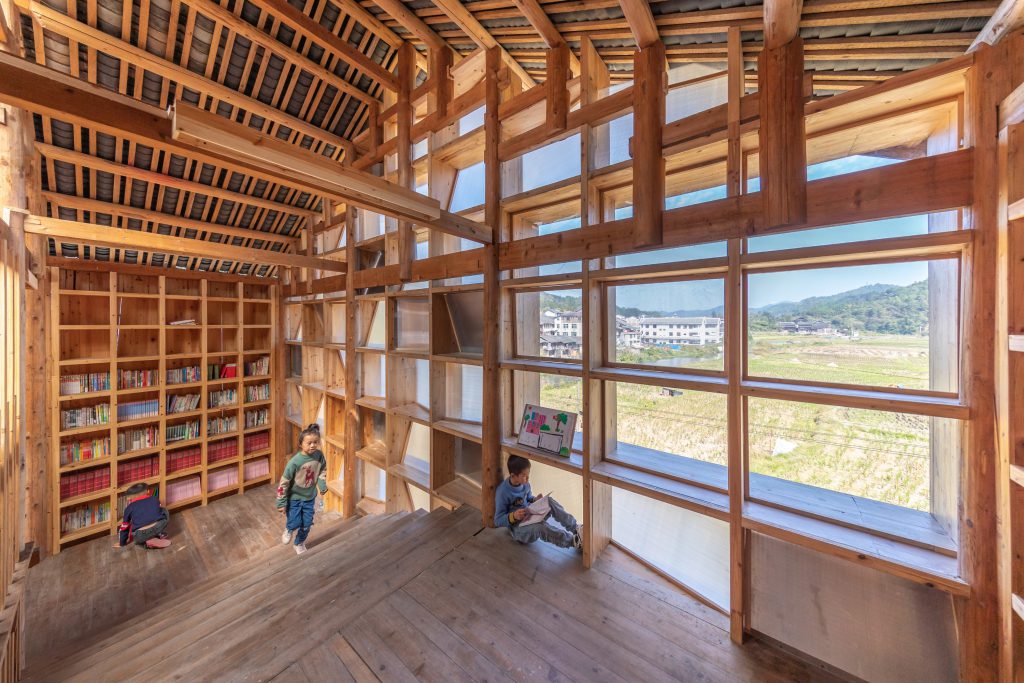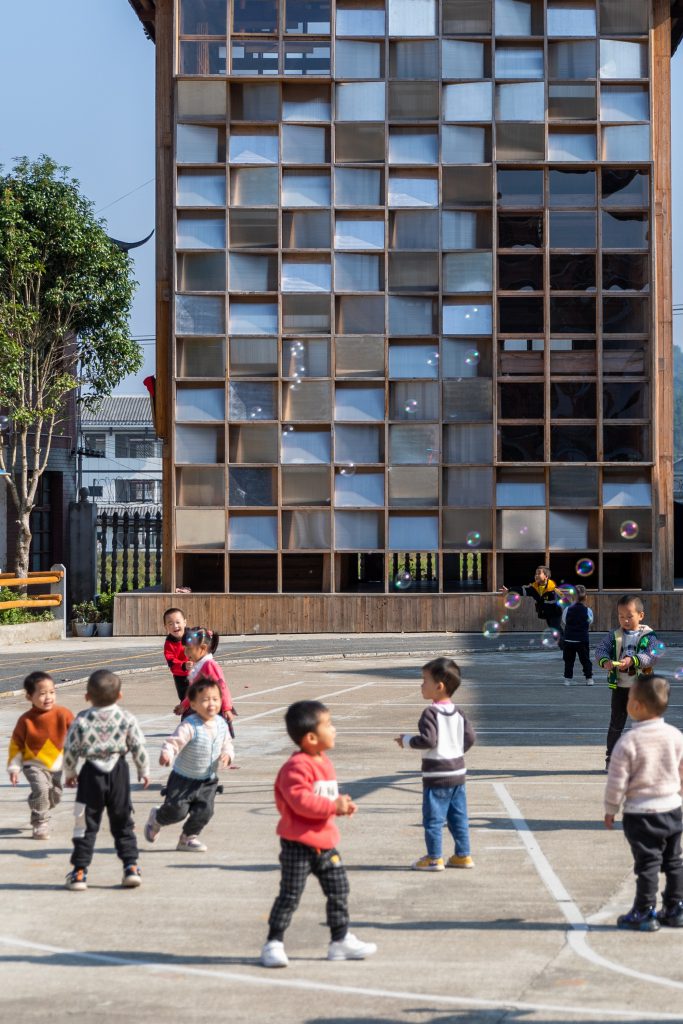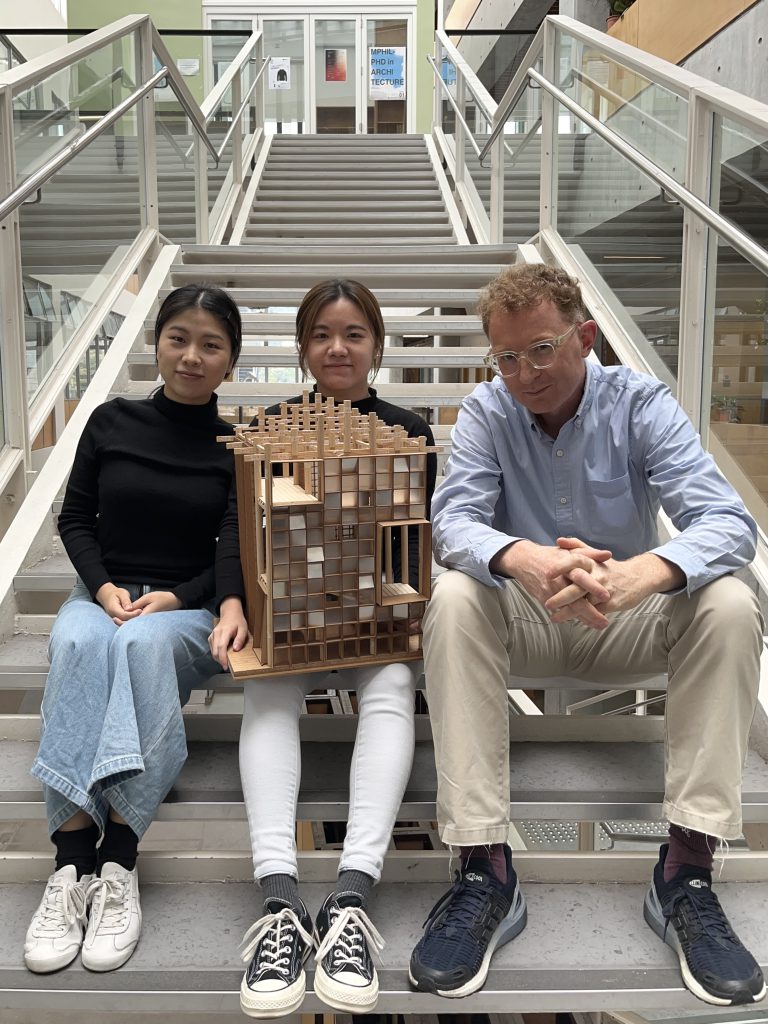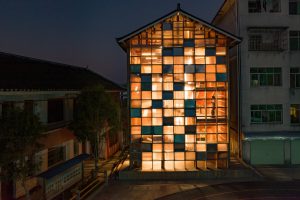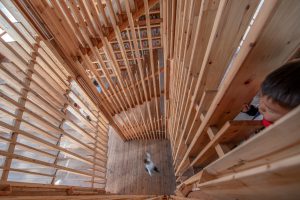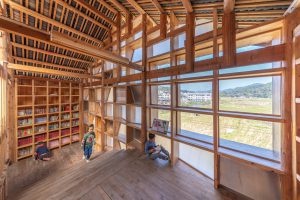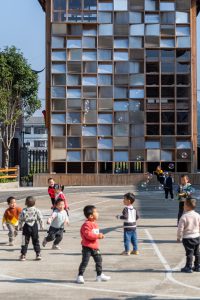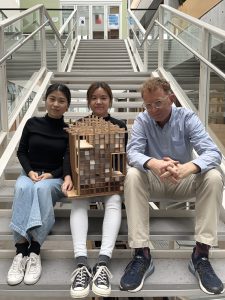CUHK
News Centre
Pingtan Book House: A rural children’s library that references the Dong minority’s heritage
The Chinese University of Hong Kong’s (CUHK) School of Architecture announced the opening of the Pingtan Book House, located at Pingtan village, Hunan Province, recently. The Book House is devised to cultivate children’s interest in reading books while playing, creating a new paradigm for rural village libraries in China. It was designed and built from 2019 to 2021 by Professor Peter W. Ferretto and his team at the Condition_Lab, together with Professor Cai Ling, as well as local carpenters in Pingtan.
Having completed the award-winning sister project, Gaobu Book House, in another Dong village three years ago, the research team realised how an architectural project could unite and revitalise the rural community as a whole. For years, Dong villages have been confronted with the ever-present reality of their architectural heritage rapidly evaporating due to contemporary living and modernisation. The Pingtan Primary School, where the Book House is located, is a prime example of this tendency. The school was built 20 years ago, entirely made of concrete, a foreign material to the Dong culture, and equipped with only a modest library, yet it accommodated more than 300 children from nearby Dong villages. The research team saw the opportunity to introduce a timber structure that retained the traditional Dong vernacular architectural language, one that would reawaken a sense of wonder in the Dong culture. Serving as a form of living heritage, the Pingtan Book House encourages local children to explore a space that recalls their rich traditions and to appreciate their culture through direct engagement.
Professor Ferretto, who has long been dedicated to research into rural village regeneration, said, “This is no ordinary children’s library. The Pingtan Book House is a place where kids read and play at the same time: a new paradigm for rural village libraries in China.”
The 180 square metres, three-storey Pingtan Book House adopts the traditional typology of the Dong “Ganlan” timber frame house, through which elements such as stairs, walls, windows and floor were reinterpreted. The building consists of two intertwined spiral staircases, with walls dedicated to bookshelves and framed views of the landscape. Except for the façade panels, the entire Book House was built in timber, with traditional Dong carpentry details.
The research team believes that this project demonstrates the social importance of architecture – how design can make an impact in a rural community while helping it reconnect with its history and culture. Design is not limited to high-end projects, and social impact does not require large amounts of financial investment.


